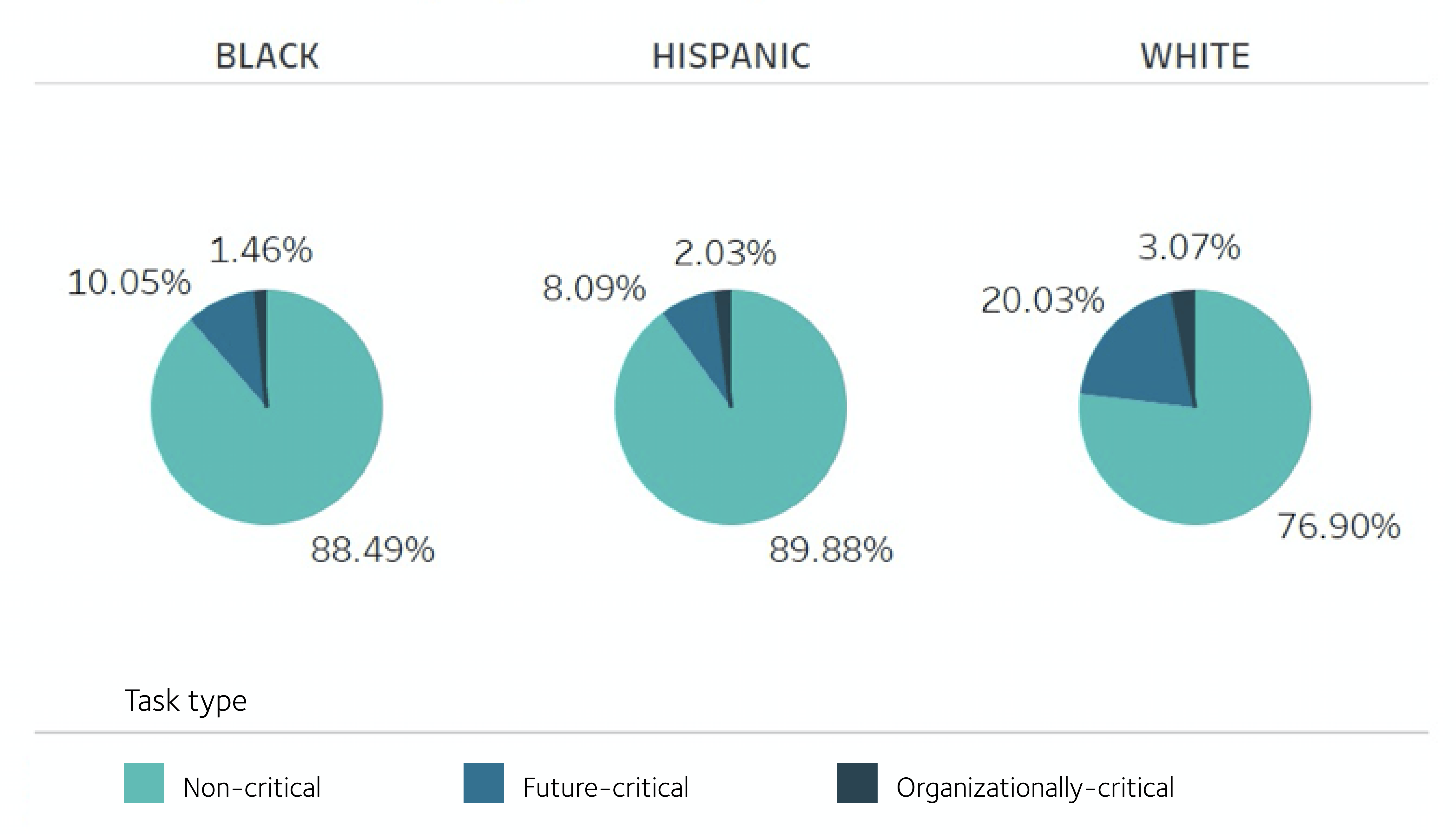The world is changing, and rapidly. How enterprises respond to this change is dependent on their...
Diversity and the age of automation
By Jessica Brown, Director of Partnerships, Americas
Digital transformation accelerates existing workforce inequalities. Our data shows that many of the marginalized communities hardest hit by the COVID-19 pandemic, especially women, Black and Hispanic workers, are also those that are most at risk of job disruption from AI and other emerging technologies.
In our report, Diversity and the Age of Automation, we've analyzed Census data on the US workforce, including analysis on gender and ethnicity, with a focus on five key industries - food services, healthcare, retail, finance and education. We selected these industries for two key factors: a high number of employees in each industry and the potential risk to those employees of contracting COVID-19, due to the nature of their work.
Faethm’s data tracks the impact of AI and robotic technology on the workforce, and analyzes these impacts based on roles, skill level, gender, ethnicity, and other categories. Our data also uncovers areas of overlap between positions, to demonstrate upskilling and reskilling pathways so all workers are brought into the future. Roles are likely to be transformed by these technologies in one of three ways:
- automation - the potential risk of replacement of a task by technology
- augmentation - work made more efficient through technology
- addition - net new roles that could be added to the workforce to implement, maintain and use different technologies
There is nothing about a person’s gender, race, or age that makes them more or less vulnerable to technology. These trends are all about the industries and jobs that populations work in, the roles they inhabit, and often the job opportunities that are available to them because of geographic or structural limitations.
Some jobs are inherently more automatable than others, due to the prevalence of repeatable, repetitive and generally low-skilled tasks. Unfortunately, the data shows that these lower-skilled, automation-prone roles also happen to be occupied by women and Black and Hispanic communities in the United States, groups that have already been disproportionately impacted by joblessness as a result of the global pandemic.
For example, data on the health care industry, which has an above-average representation of Black Americans, reveals that nearly 90% of the tasks undertaken by Black workers are non-critical, and thus have roles that are more at risk for disruption from digital transformation. The same is true for Hispanic workers in health care. In comparison, only 75% of tasks undertaken by White workers in healthcare are non-critical.

As digital transformation accelerates, we have an opportunity and responsibility to ensure all groups are brought into the future. This is true from a pure resource perspective—as there will continue to be a deficit in the supply of needed workers in critical industries in the US over the next 10 years. Read our report, The Future of Jobs in the Era of AI, produced in partnership with BCG, to learn more about these deficits in the US. In addition, there are numerous tangible benefits to diversity in organizations.
A diverse workforce improves productivity, innovation and employee retention, all strengths for every organization.
Read our report to understand the disproportionate impact of accelerated digital transformation in the US on minority and under-represented workforce groups, and recommended actions that companies can take to remedy this trend.



